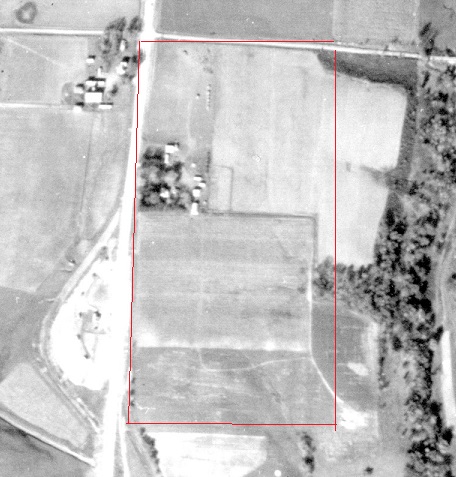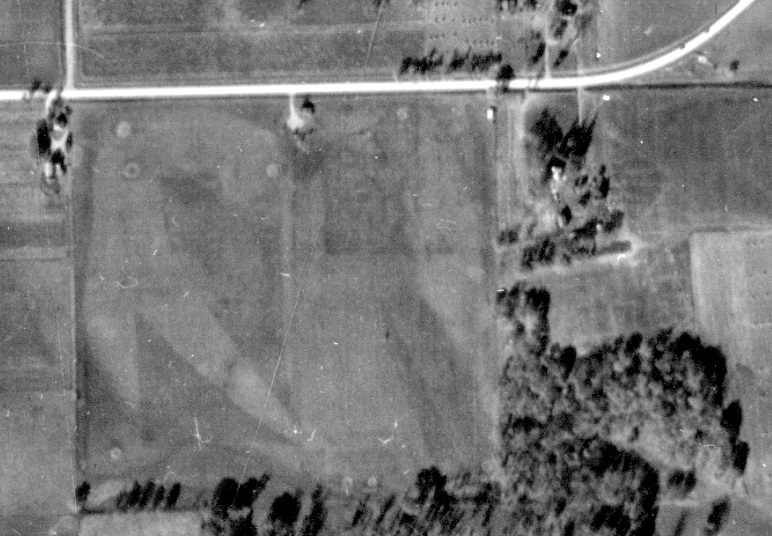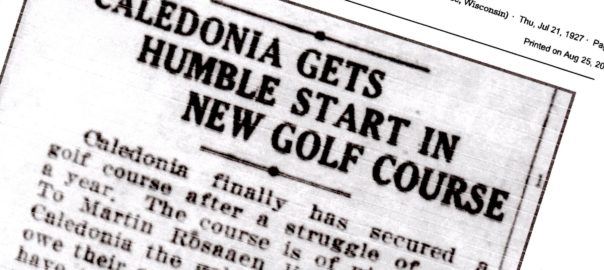Time for a belated thank-you note. Very belated.
Ninety-four years belated.
Thank you, Martin Rosaaen.
For much of his life, Martin T. Rosaaen farmed 80 acres in Houston County, Minnesota, alongside State Highway 44, a mile and change north of the city of Caledonia. It’s unknown whether he ever struck a golf ball sideways or otherwise with a hickory-shafted niblick, but he is a notable figure in the development of the game in the southeastern corner of the state.
Which merits a thank you from me because, well, Caledonia is my hometown, the place where I not only learned to strike golf balls sideways and otherwise but also learned a bit about the history of the game — even if the concept of a lost golf course was foreign to me until many years after Martin’s passing.
Rosaaen’s connection to golf is more coincidental than direct, but it was upon his rolling farmland that play began at Caledonia Golf Club, established Aug. 12, 1926. The Rosaaen plot was the first of four upon which golfers from Caledonia and a half-dozen other nearby cities have spent some of their down time in the past near-century.
When I started researching Minnesota’s lost golf courses in earnest in 2012, I was told about the lost course on the Anna Bowers farm at the southwestern corner of town that lasted from 1926-41. (Though I wrote it that way in “Fore! Gone,” it appears a correction is in order, as the Rosaaen course preceded the course on the Bowers land.) I learned soon after that of the lost course on the Peter Koenig property near the northwestern corner of the city that existed only in 1949 and maybe part of the 1950 season. And I had been told by my uncle, the recently deceased Bob Schwartzhoff, that there had been another lost course, north of town “on the Beranek farm.” I never have figured out where the Beranek farm was, even after checking many historical plat maps and asking a few locals.
I still don’t know if there was a Beranek farm, and if so where it was, but I recently came across a newspaper clip that confirmed a lost course north of town.
Enter Martin Rosaaen.
The Winona Daily News of Aug. 13, 1926, reported on the establishment of Caledonia Golf Club, relating that “at least 50 members are expected to join the organization as well as a considerable number of Spring Grove people.” (Spring Grove is the next city west of Caledonia.) “… The location of the course has not been fully decided upon,” the Daily News reported.
The previous day’s Daily News had offered slightly more detail, saying the course would be nine holes and the proposed location “has been pronounced very fine by Arthur Bakken, La Crosse golf professional.” (His name was Arthur Bakkum, but whatever.)
A La Crosse Tribune story from July 21, 1927, confirms the location of the new course.
“Caledonia finally has secured a golf course after a struggle of over a year,” the newspaper reported. “… To Martin Rosaaen living north of Caledonia the golf bugs of Caledonia owe their appreciation for what they have to play on. Martin has a nice pasture and for a year or more has given his permission to those who want to knock a ball around to go to it to their hearts content. While there is not much to the course as yet it is a start and the wise birds say that is all that is needed to get a real club and course going.”
The wise birds had it half right. The course on Rosaaen’s farm got going, but it didn’t last long.
Two newspaper stories from 1927 reported that the Rosaaen farm had been put into play for golf that season — and plans were in place for something even better the next year.
“Work has progressed rapidly in the Caledonia golf course during the past week,” the Daily News reported on May 3, 1928. “Sunday saw quite a large crowd of fans at the newly improved course which is about one mile north of town on Highway No. 44.
“A gravel driveway now leads into the grounds and ample parking space is provided. The course is nine holes with natural hazards to make any golfer use all his skill. One hole is 500 yards long.”
A Tribune story from February 1928 also noted impending improvements to the Rosaaen course, including the elimination of — horrors! — crossing fairways.

But as the 1929 golf season approached, plans had changed. “Caledonia Starts New Golf Course,” read a headline in the Winona Daily News of April 27, 1929.
“The Caledonia Golf club has concluded negotiations for a ten-year lease of the Bowers farm from Mrs. Anna Bowers, and now arrangements are under way to convert this tract into a golf course. …
“Playing will continue on the old course until the new course is completed.”
The Rosaaen land appears to have been used by Caledonia golfers during the 1929 season and at least part of 1930. The Winona Daily News reported on April 1, 1930, that the club’s lease with Rosaaen was to expire on May 1 but that, until the Bowers plot was golf-ready, the Rosaaen course would be “kept in shape so that local golfers may limber up. Greens and fairways at the old location are in fair condition.”
The Bowers farm course was laid out by La Crosse Country Club professional Ted Smith and the aforementioned Bakkum, who judging by other newspaper stories was employed by the La Crosse club but likely wasn’t its head professional. Smith, a native of Australia, was an accomplished player, once shooting a 63 at La Crosse CC, and later became the pro at Somerset Hills Country Club in Bernardsville, N.J.

The course on the Bowers farm had a nice run, operating until 1941. The short-lived Koenig farm course, designed by Winona Country Club pro Ben Knight, came next, and on Sept. 4, 1961, a grand opening ceremony was held at Ma Cal Grove Country Club, one mile north of town. That nine-hole course, still operating, was designed by Willie Kidd, the head pro at the famed Interlachen Country Club in Edina, Minn., and later a Minnesota Golf Hall of Fame inductee.
What became of the Rosaaen property? Honestly, it probably served better as agricultural land than as a golf course. In the early 1930s, it passed from Martin Rosaaen (who died in 1950) to Leonard Wohlers, husband of Rosaaen’s daughter Emelia. The Wohlerses owned the land into at least the 1970s, according to plat maps, and among the post-golfing animals that roamed their property were turkeys and Tennessee Walking Horses.
The property is now host of a house owned by Joe Welch, who owns and operates a heavy-equipment company in Caledonia. He is a member of Ma Cal Grove and — this is one of my favorite tidbits of Minnesota lost-course history — owns, in addition to the old Martin Rosaaen farm, the old Anna Bowers farm.
Latest posts by Joe Bissen (see all)
- Another lost routing: Hilltop, Columbia Heights - June 19, 2024
- Two lost routes: First, Antlers Park - June 17, 2024
- Tree trouble and townball: Naeseth Country Club, Wanamingo - May 6, 2024
